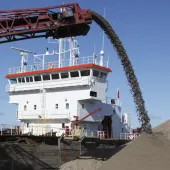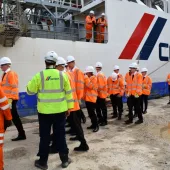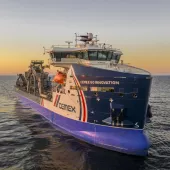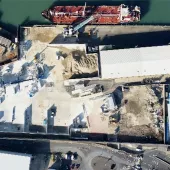Charting a Way Forwards for Marine Aggregates
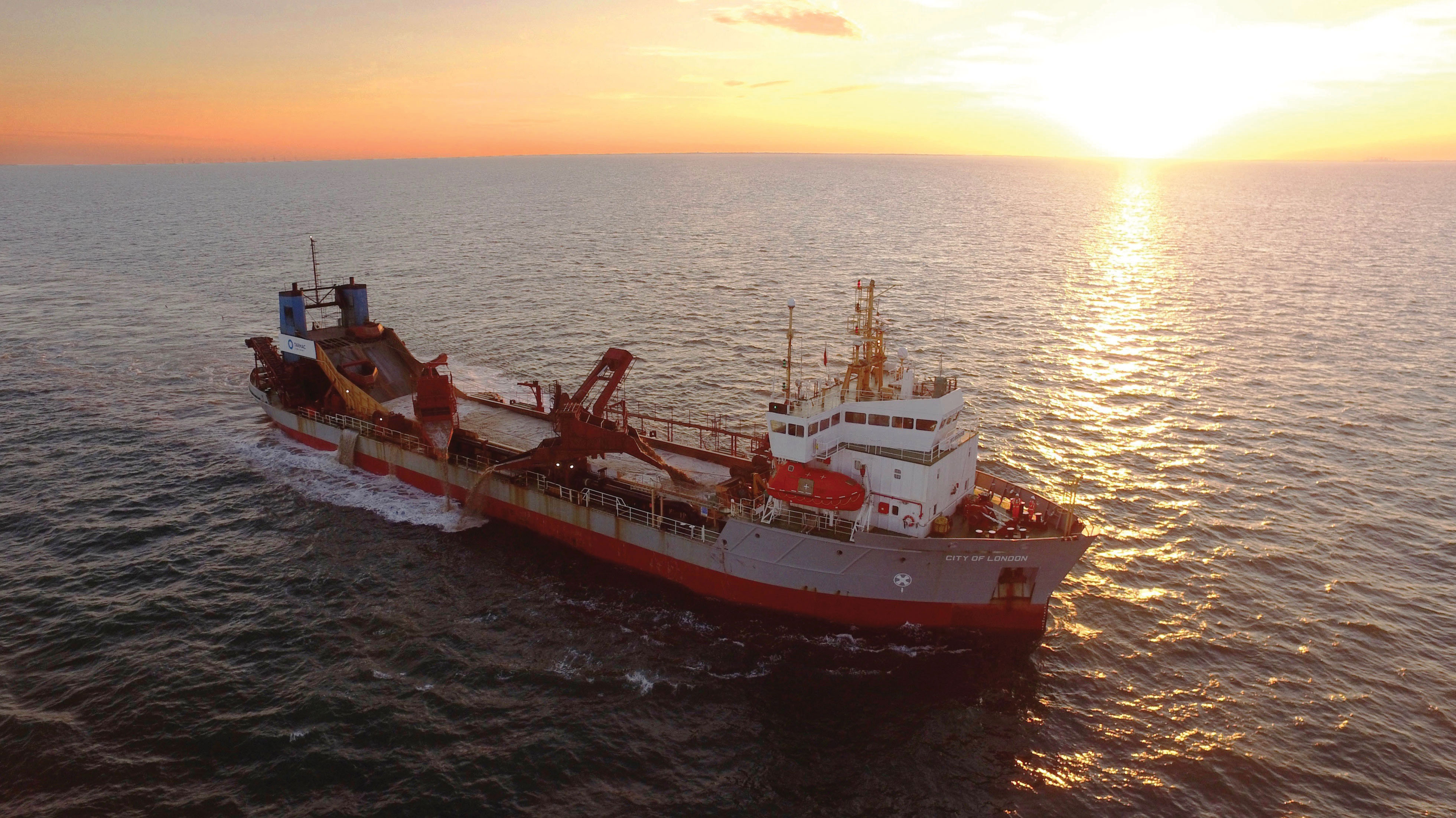
First published in the May 2019 issue of Quarry Management
Mark Russell, MPA executive director – planning, mineral resources & BMAPA, examines the factors that will shape the ability of marine-dredged sand and gravel to contribute to the wider demand for construction aggregates.
In 2017, the Mineral Products Association (MPA) produced a series of long-term construction aggregate demand and supply scenarios for Great Britain1. In light of the uncertain economic climate, a series of conservative assumptions around the prospects for future construction needs across the country and the aggregates demand that would result, identified that between 3.2 and 3.8 billion tonnes of construction aggregates would be required by 2030, with annual demand potentially increasing to 267 million tonnes. The underlying message from this work was that unless a stronger link was made to the essential mineral resources upon which construction activity relies, there was a growing risk that the ability to provide the most cost-effective and sustainable supply solutions would be missed. Long-term construction ambitions need to be supported by a properly resourced, long-term mineral planning system to ensure the right resources are available in the right place and at the right time to support sustainable growth.
The work concluded that while there appeared to be sufficient indigenous mineral resources available to support future demand requirements, there were issues around the supply mix that would need to be addressed. Under all the supply scenarios considered, significant tonnages of primary aggregates would still be required, supplying between 63% and 72% of overall demand, with recycled and secondary materials providing the balance. Given the decline in permitted reserves of land-won sand and gravel over the last decade, the MPA’s latest Annual Mineral Planning Survey2 identifying a replenishment rate of just 54% since 2008, there would be a growing reliance on other sources to meet future demand, particularly crushed rock and marine sand and gravel.
Marine aggregates already make a significant contribution to the wider portfolio of supply, particularly at a regional scale. The latest landing statistics from The Crown Estate3, in their capacity as the landowner for majority of the non-energy mineral rights on the UK continental shelf, show that a total of 19.8 million tonnes of marine sand and gravel were extracted from licensed areas distributed in seven geographic regions around the coasts of England and Wales in 2018. Of this, just over 13 million tonnes was landed at wharves in England and Wales for use as construction aggregate, of which 11.2 million tonnes was landed in London and the South East. This is significant, given that one third of all GB construction activity takes place here, representing a value of £50 billion per annum. Elsewhere, marine supplies provide an important role supporting regional construction activity in the North East, the South West and the North West.
A further 4 million tonnes of marine sand and gravel were exported to the near Continent, largely Belgium and the Netherlands, for use as concrete aggregate, reflecting the absence of suitable deposits of coarse aggregate on those countries’ continental shelves, while 0.7 million tonnes were used to support coastal-defence works projects along the Lincolnshire and Sussex coastlines, and 1.2 million tonnes were supplied as contract fill to port development projects at Felixstowe and Dover.
The variety across these very different markets means that marine aggregate operators need flexibility to adapt to changing market conditions. This is helped by the fact that although the licensed reserves may be in fixed geographical locations, the fleet of dredging vessels are able to relocate in order to match production capacity with market demand.
Looking forward, there are a number of connected factors that will ultimately shape the ability of marine-dredged sand and gravel to contribute to the wider demand for construction aggregates, prompted by the Government’s ambitions around housing and infrastructure development.
Continued access to commercially viable sources of sand and gravel is, of course, fundamental to the ability of the marine aggregate sector to meet future demand. The industry has recently successfully completed a programme to re-licence many of its historic production areas through a process co-ordinated on the industry’s behalf by the British Marine Aggregate Producers Association (BMAPA), alongside individual operators securing new production licences. The Crown Estate’s latest Marine Aggregates Capability & Portfolio4 reports a total of 342 million tonnes of primary reserves were permitted for extraction from current licensed areas in 2018. This is equivalent to over 20 years’ supply, based on the average annual production that has occurred over the last 10 years.
The reserve base in many licence areas will ultimately be constrained by the duration of the marine licence that permits extraction, rather than the geological availability of commercially viable resources. Once the marine licence (a combination of a planning permission and an environmental permit) for an individual area reaches the end of its term (typically a maximum of 15 years), operations can be re-licensed, subject to the environmental acceptability of accessing the resources that remain.
Since the 1960s, more than 900 million tonnes of marine sand and gravel have been removed from licensed areas. Over this period, the location and extent of licensed areas has evolved and changed considerably as geological knowledge, industry practice and environmental policy, regulation and control has developed. In 1999, BMAPA and The Crown Estate signed an ‘Area Involved’ initiative, which voluntarily committed the marine aggregate industry to review all dredging licences on a rolling basis, with the objective to minimize the area of seabed licensed and dredged. The 20-year review of this initiative5, published earlier this year, showed that the industry had reduced its licensed footprint by 401km2, to 1,057km2 at the end of 2017. The annual area of seabed dredged also reduced significantly, from 223km2 in 1998 to 91km2 in 2017. These reductions, largely as a consequence of good management practice, have allowed the industry to minimize its environmental footprint.
At the same time, the pressures on how the marine environment is being used have also evolved – with the growth of marine renewable energy (particularly offshore wind) and the development of a network of marine protected areas arguably representing the two most significant changes. As on land, the distribution of commercially viable marine sand and gravel resources is highly limited, constrained by their geological distribution and their geographical position relative to the market locations. Consequently, with the growing demands being placed on the use of marine space, there is a need to ensure that existing marine aggregate interests (production licences, applications and option areas) are provided with adequate protection against new developments that may interfere with their ongoing safe operation. Equally, given the limited spatial extent of commercially viable marine sand and gravel deposits, it is also important that areas of potential future resource are clearly identified, recognizing that future resource demands and requirements will inevitably evolve and change over time.
The development of marine planning, supported by a UK Marine Policy Statement6 that acknowledges the need to ensure that ‘Marine Planning Authorities and decision makers... need to safeguard [marine aggregate] reserves for future extraction...’ has provided the means to introduce marine mineral safeguarding policies, ensuring that the importance of both existing licensed interests and areas of potential future resource can are properly considered through the development process for other activities. The marine plans that are now formally adopted in the East Coast and South Coast regions around England mean that more than 90% of marine aggregate reserves are protected by these policies, with the plans being developed for the remaining English marine regions, together with the forthcoming Wales National Marine Plan, all expected to mirror these provisions.
Alongside the access to resources, the second factor that needs to be considered is the requirement to ensure that marine aggregates can continue to access their markets, through the availability of suitable wharves to land, process and distribute these materials. While existing wharves, along with other essential mineral infrastructure, have traditionally received a degree of protection through the site safeguarding policies defined in national policy (specifically Paragraph 204 (e) of the National Planning Policy Framework (NPPF)7), these requirements are not always implemented effectively through local planning processes. As a consequence, the growing demand for waterfront locations can result in incompatible developments (often housing) nearby, placing pressure on and constraining existing operations that often require the flexibility to operate 24 hours a day, seven days a week.
Given the availability of such landing sites is already limited, if wharves are lost, they are unlikely to be easily replaced with immediate consequences for those markets that are being supplied. In 2018, the updated NPPF helpfully introduced the ‘agent of change’ principle (Paragraph 182), which had first been proposed in the London Plan. This states that ‘Where the operation of an existing business or community facility could have a significant adverse effect on new development (including changes of use) in its vicinity, the applicant (or ‘agent of change’) should be required to provide suitable mitigation before the development has been completed’. Through this, the responsibility to adapt to any existing activities or uses very clearly rests with any incoming developer. While it is still early days, recent case law would suggest that this policy does have teeth assuming it is applied correctly.
As well as policy provisions to protect existing wharf capacity there are also examples of new wharf capacity being developed, with rail-linked landing facilities in Newhaven (East Sussex) and the Port of Tilbury (Essex). In the case of the Tilbury2 development, which was approved in February 2019, the new deep-water bulk-handing facility for construction materials that is being planned as part of the wider multi-million-pound port development is expected to become the largest in the UK. Given the expectations around the role that marine supplies may be required to contribute towards the overall supply of construction aggregate demand, the connection between wharves and rail-linked infrastructure will play an increasingly important role.
The third and final factor relates to the production capacity of the sector. The most recent BMAPA Sustainable Development report8 shows the average age of the current dredging fleet operated by member companies to be over 22 years, reflecting the fact that most vessels were built in the late 1980s/early 1990s. Given the typical working life of a dredger is 25 years, significant investment will be required across the sector to replace existing capacity and maintain the ability to supply. While the sector’s annual sustainable development reporting demonstrates evidence of continuous operational improvement, albeit with marginal gains, this also provides an opportunity to significantly improve operational efficiencies through the adoption of 21st Century technologies. Each new-build vessel can be expected to cost upwards of £30 million, therefore the long-term nature of these significant investments invariably means that operators require sufficient confidence and certainty in the role for marine aggregate supplies over a 15-year horizon and beyond. The solid reserve base that has been delivered through the re-licensing process, coupled with the security provided by marine planning and the provisions of the UK Marine Policy Statement, have made a significant contribution towards securing a more certain future for the sector. For now, this has resulted in at least one new, purpose-built marine aggregate dredger being commissioned by a marine aggregate operator, with the potential for more new builds to follow across the industry.
Alongside the new wharf capacity, these long-term investments collectively demonstrate the confidence that is being placed in marine sand and gravel supplies to maintain their crucial contribution towards the overall supply of essential construction aggregates into the future.
References
- Mineral Products Association, ‘Long-term aggregates demand & supply scenarios 2016-2030’ (2017).
- Mineral Products Association, ‘AMPS 2018 – 7th Annual Mineral Planning Survey Report’ (2018).
- The Crown Estate, ‘Marine Aggregates – The Crown Estate Licences – Summary of Statistics 2018’ (2019).
- The Crown Estate, ‘Marine Aggregates Capability & Portfolio 2018’ (2019).
- British Marine Aggregate Producers Association & The Crown Estate, ‘Marine aggregate dredging 1998-2017 – a 20-year review’ (2019).
- HM Government, ‘UK Marine Policy Statement’ (2011).
- Ministry of Housing, Communities and Local Government, ‘National Planning Policy Framework’ (2018).
- Mineral Products Association, ‘BMAPA Sustainable Development Report 2018’ (2019).
- Subscribe to Quarry Management, the monthly journal for the mineral products industry, to read articles before they appear on Agg-Net.com


